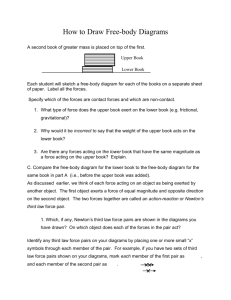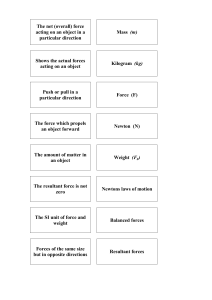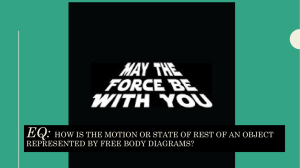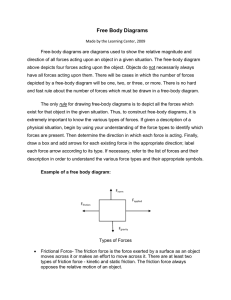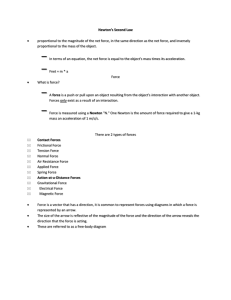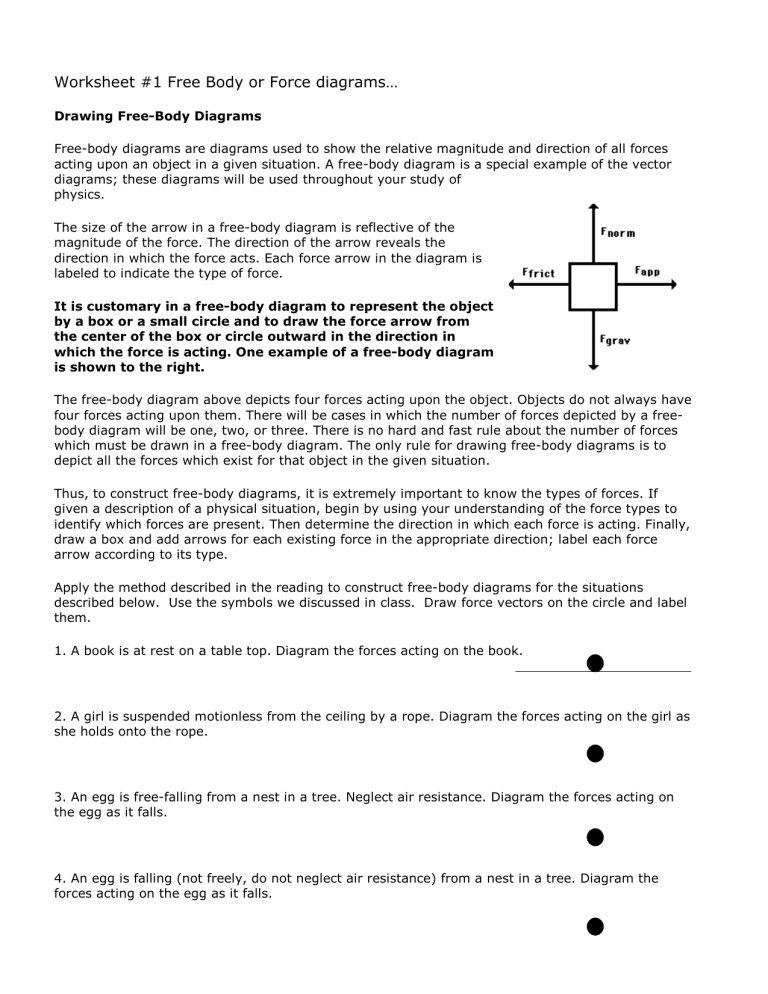
Worksheet #1 Free Body or Force diagrams… Drawing Free-Body Diagrams Free-body diagrams are diagrams used to show the relative magnitude and direction of all forces acting upon an object in a given situation. A free-body diagram is a special example of the vector diagrams; these diagrams will be used throughout your study of physics. The size of the arrow in a free-body diagram is reflective of the magnitude of the force. The direction of the arrow reveals the direction in which the force acts. Each force arrow in the diagram is labeled to indicate the type of force. It is customary in a free-body diagram to represent the object by a box or a small circle and to draw the force arrow from the center of the box or circle outward in the direction in which the force is acting. One example of a free-body diagram is shown to the right. The free-body diagram above depicts four forces acting upon the object. Objects do not always have four forces acting upon them. There will be cases in which the number of forces depicted by a freebody diagram will be one, two, or three. There is no hard and fast rule about the number of forces which must be drawn in a free-body diagram. The only rule for drawing free-body diagrams is to depict all the forces which exist for that object in the given situation. Thus, to construct free-body diagrams, it is extremely important to know the types of forces. If given a description of a physical situation, begin by using your understanding of the force types to identify which forces are present. Then determine the direction in which each force is acting. Finally, draw a box and add arrows for each existing force in the appropriate direction; label each force arrow according to its type. Apply the method described in the reading to construct free-body diagrams for the situations described below. Use the symbols we discussed in class. Draw force vectors on the circle and label them. 1. A book is at rest on a table top. Diagram the forces acting on the book. 2. A girl is suspended motionless from the ceiling by a rope. Diagram the forces acting on the girl as she holds onto the rope. 3. An egg is free-falling from a nest in a tree. Neglect air resistance. Diagram the forces acting on the egg as it falls. 4. An egg is falling (not freely, do not neglect air resistance) from a nest in a tree. Diagram the forces acting on the egg as it falls. 5. A rightward force is applied to a book in order to move it across a desk with a rightward acceleration. Consider frictional forces. Neglect air resistance. Diagram the forces acting on the book. 6. A rightward force is applied to a book in order to move it across a desk at constant velocity. Consider frictional forces. Neglect air resistance. Diagram the forces acting on the book. 7. A car is stopped at a stop light. 8. A skydiver is descending with a constant velocity. Consider air resistance. Diagram the forces acting upon the skydiver. 9. A car is parked on a sloped street. 10. A hot air balloon is accelerating upward. 11. A car is coasting to the right and slowing down. Diagram the forces acting upon the car.
